ArchBook: Architectures of the Book
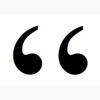
Published March 7, 2014
Corrected and updated February 25, 2019
Figure 1
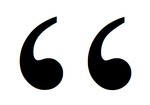
Click For Larger Image
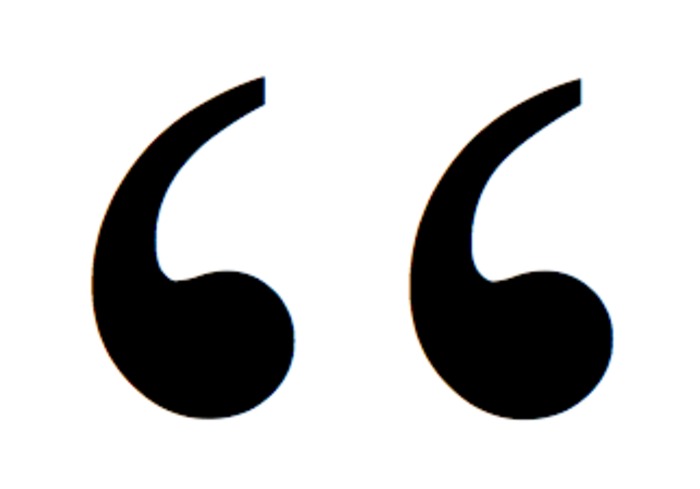
Inverted Double CommasInverted double commas, which can represent, among other things, commonplace markers and quotation marks. CLOSE or ESC
Even though they serve different functions, commonplace markers and quotations marks often appear identical: inverted single or double commas (or “diples”), familiar to us from twenty-first century printing practices (see fig. 1).1 Commonplace markers, which were used from the sixteenth to the eighteenth centuries, are punctuation marks that indicate a passage is worth copying: these were sometimes included by the author, translator, or printer, and could also be added by readers. Quotation marks show when a writer is using another person’s words. Although commonplace markers have fallen out of use, commonplace markers and quotation marks are related phenomena that co-existed and developed alongside each other.
As their name implies, commonplace markers point out commonplaces (sometimes called sententiae): words of wisdom or well-phrased ideas. These maxims are generally short enough to be easily memorized or quickly jotted into a personal miscellany or commonplace book. Indeed, commonplace markers indicate explicitly that others should consider quoting the marked words. As Margreta de Grazia elegantly explains, quotation marks function in a way that contrasts with commonplace markers: commonplace markers “signalled communal ground” whereas quotation marks “serve to fence in a passage as property of another.”2 For centuries, inverted commas served the dual role of showing quoted speech and suggesting speech to be quoted—and, in some rare cases, this punctuation functions as both commonplace markers and quotation marks.
Modern readers may never think about the purpose of quotation marks, but their evolution into today’s standardized usage occurred over the span of centuries and continues to change. The meaning of those ubiquitous double inverted commas cannot be taken for granted: beyond offering quotations and highlighting commonplaces, this punctuation can indicate the tone of a passage, a speaker’s emotions, or important points to remember. Commonplace markers and quotation marks can change the meaning of a text in both predictable and unexpected ways.
Commonplace Markers
Figure 2

Click For Larger Image

Measure for MeasureWilliam Shakespeare, Mr Shakespeares Comedies, Histories, & Tragedies (London: Isaac Iaggard and Ed. Blount, 1623), 70 (detail). Image courtesy of State Library of New South Wales (Safe/RB/Y1/1) and the Internet Shakespeare Editions.CLOSE or ESC
Although many early modern printers used commonplace markers that look like present-day quotation marks (see fig. 1), commonplaces could also be indicated by other typographical pointers. In medieval manuscripts Manuscript any document in which the text is written by hand. See: Script CLOSE or ESC, commonplaces were often highlighted by leaving a space at the end of the commonplace or sometimes indicated with different punctuation marks.3 Commonplaces could be designated by manicules Manicule a mark found typically in the margin of a text, either drawn by hand or printer, in the shape of a hand, or pointing fist. Generally, manicules are used to indicate notable passages. Other names for the manicule is the printer's fist, or mutton fist. See the ArchBook essay Manicules for more details. See: Margin CLOSE or ESC, asterisks, or, in print, by using a different typeface Typeface a particular design of type. See: Face Type x-height Ascenders CLOSE or ESC.4 G. K. Hunter’s landmark essay was the first to suggest multiple and widespread ways that sententiae were indicated in early modern print.5 In Shakespeare’s First Folio (1623), both a change of typeface and inverted commas (traditional “commonplace markers”) are used to highlight passages of value—and sometimes, one passage will be doubly marked with both of these techniques.6 In the First Folio text of Measure for Measure, for instance, the only line emphasized by a commonplace marker is Isabella’s “More then our Brother, is our Chastitie,” which highlights the main themes of the play (see fig. 2).
Figure 3

Click For Larger Image
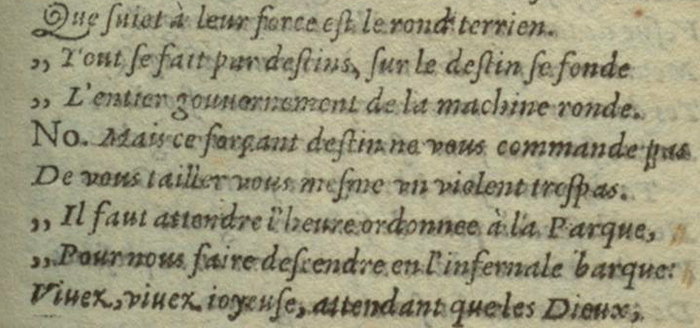
Les TragédiesRobert Garnier, Les Tragédies (1588), f. 9v. Image courtesy of Thomas Fisher Rare Book Library, University of Toronto.CLOSE or ESC
The earliest-known printed commonplace markers are found in Filippo Giunta’s 1506 edition of Seneca’s tragedies, which were Florentine-published Latin works.7 Other continental works, often drama, included commonplace markers. Zachary Lesser and Peter Stallybrass suggest that commonplace markers were used as a way to place vernacular works in a distinguished literary tradition alongside their classical predecessors.8 These typographical indicators can be found in works published across Europe: in Greek and Latin versions of Euripides’ plays and Sophocles’ Antigone, in Robert Garnier’s Senecan-style tragedies (see fig. 3), and in Thomas Sackville and Thomas Norton’s Gorboduc.9 While commonplace markers appeared in many genres, they were especially prevalent in plays.10
Printed commonplace markers could be added (or removed) at almost any point in textual production. Both authors and printers would insert commonplace markers into texts. G. K. Hunter suggests that edited works would be more likely to have these gnomic pointers, while also noting that compositors Compositor the person responsible for arranging the type in the proper order so that it can be printed. CLOSE or ESC and printers could influence the style and number of commonplace markers used.11 Some early modern writers indicated commonplaces as they wrote (see the Spotlight on Ben Jonson below). Similarly, translators would preserve commonplace markers in their text, carrying them over from one language into another.12
Figure 4
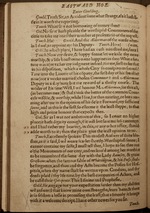
Click For Larger Image
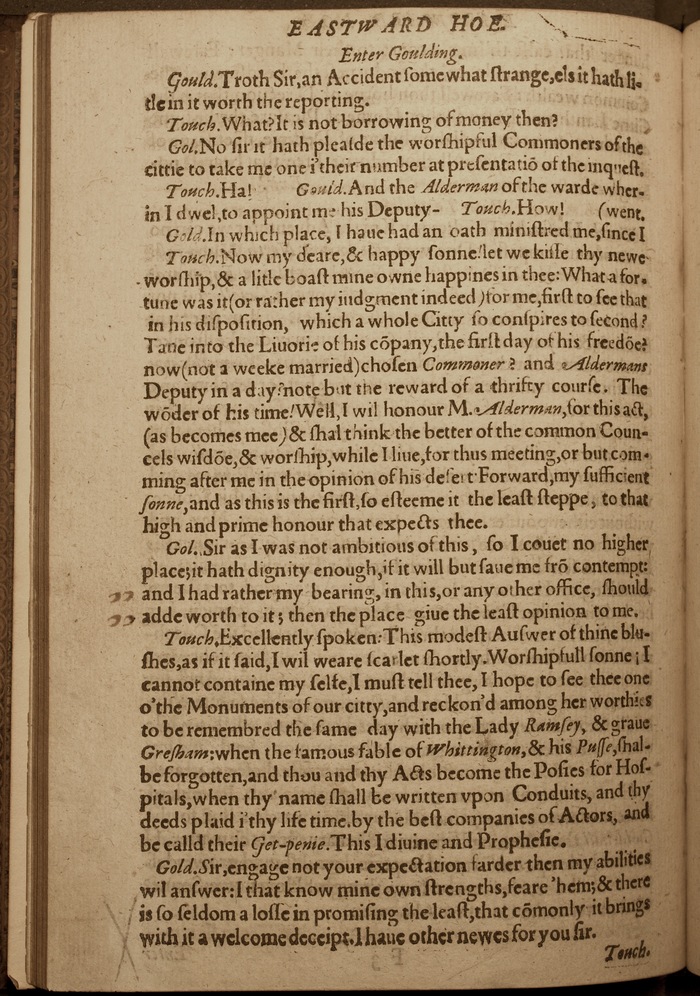
Eastvvard HoeGeorge Chapman, Ben Jonson, John Marston, Eastvvard Hoe (1605), sig. F3v (STC 4972 copy 1).Thanks also to Holger Syme for identifying the handwritten commonplace markers in this text and taking the photograph. Image courtesy of the permission of the Folger Shakespeare Library.CLOSE or ESC
Beyond authorial, editorial, and printing practices, annotating readers would add handwritten commonplace markers to the margins Margin white space surrounding the area taken up by printed matter. See: Back Margins Head Foot Manicule Marginalia CLOSE or ESC of printed texts. Readers could intervene in a text by jotting crosses, manicules, straight lines, or curly braces next to key passages, or by underlining or commenting on the text.13 Likewise, some readers added inverted commas to mark commonplaces. Figure 4, for instance, offers an example of both double inverted commas and a marginal x written by hand in one early modern play text. Commonplace markers of all types were handwritten in printed texts both for personal use and to highlight passages for future readers of that particular copy Copy Text manuscript or typescript that is to be set in type and printed. CLOSE or ESC of a work. The first quarto Quarto a sheet of paper folded twice, resulting in 4 leaves/8 pages. See: Format CLOSE or ESC of Hamlet is famous for its printed commonplace markers; as figure 5 shows, one reader chose to add manuscript commonplace markers to text already marked by the printed commonplace markers.14 In this example, a speech by Corambis (a.k.a. Polonius) is trebly marked as sententious: he identifies his lines as “precepts” to memorize, the printer included commonplace markers, and a reader emphasized those commonplace markers with manuscript additions.
Figure 5
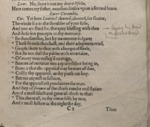
Click For Larger Image
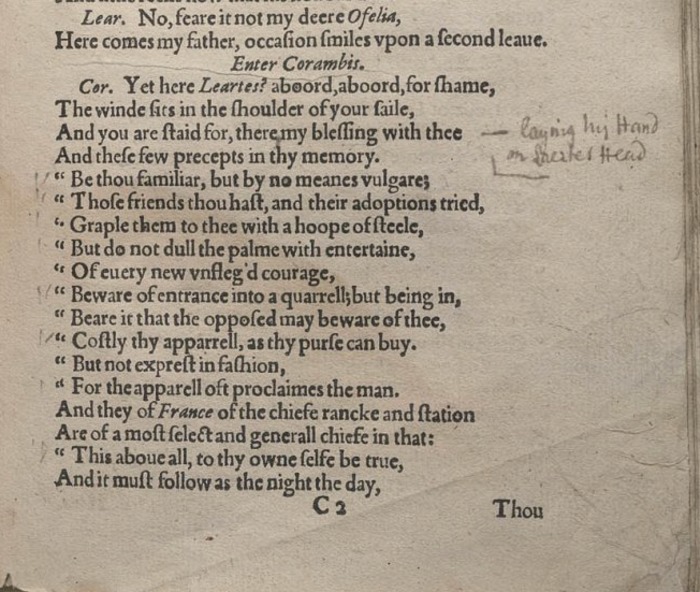
HamletWilliam Shakespeare, Hamlet (1603). Image (c) British Library Board, C.34.k.1, sig.C2. Note the print and manuscript commonplace markers. CLOSE or ESC
Not only did early readers add handwritten commonplace markers to printed texts, but some early writers also included commonplace markers in full-text manuscript works. The full-text manuscript copy of George Gascoigne’s and Francis Kynwelmershe’s Jocasta (BL Add. MS 34063) includes commonplace markers in most of the same places as the printed text.15 On the one hand, Gascoigne and Kynwelmershe may have included commonplace markers in their holograph manuscript as they were composing the play. On the other hand, the copyist may have chosen to add the commonplace markers when copying from their original manuscript(s) or may have included the commonplace markers from the printed version of the play. It is unknown if this manuscript copy predates the printed play or vice versa.
Commonplace markers are, as their name suggests, related to commonplace books Commonplace Book a book which serves as a collection of (generally) one individual's notes, quotations, Bible verses, and other snippets of information. CLOSE or ESC, though inverted commas are only infrequently found in miscellanies and commonplace books.16 Commonplace books, which appear in both manuscript and printed forms, are collections of passages from other works, and as such, already mark out important selections from larger works by their inclusion. Printed commonplace books, like commonplace markers, show the value of sententious passages. Stallybrass and Roger Chartier suggest that John Bodenham chose to excerpt numerous passages from Shakespeare’s The Rape of Lucrece in his print commonplace book, Bel-vedére (1600), because commonplace markers showed that the text was valuable, literary, and sententious.17 Commonplace markers can indicate to readers what to copy into their manuscript commonplace books.
Overlapping Early Modern Practices: The Multiple Meanings of Inverted Commas
Quotation marks emerged around the same time as commonplace markers in early sixteenth-century European printed texts.18 Though serving different functions, commonplace markers and quotation marks, both often represented as inverted commas, co-existed throughout the sixteenth and seventeenth centuries. Today, however, quotation marks and not commonplace markers are in typical use. Though commonplace markers and quotation marks signify different ways of treating the text, they evolved from a common source: many early commonplaces/quotations that were marked with the inverted commas were passages from the Bible.19 Biblical passages would be marked because they contained knowledge meant to be shared with others (commonplaced), and also because the authority of the Bible was being acknowledged (quoted). Eventually, however, double inverted commas came to indicate that a text was “theirs” (quotations belonging to an author) rather than “ours” (commonplaces for a collective readership).
Figure 6
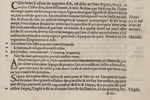
Click For Larger Image
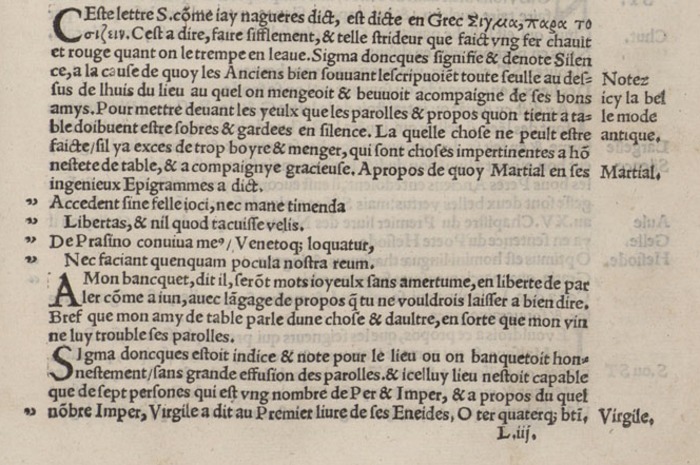
Champ FleuryGeofroy Tory, Champ Fleury (1529), sig. Liii. Tory quotes from Martial's epigrams. The quote can also function as a commonplace. Image courtesy of Les Bibliothèques Virtuelles Humanistes and les fonds patrimonial des bibliothèques de Blois-Agglopolys.CLOSE or ESC
Indeed, in some sixteenth- and seventeenth-century texts, inverted commas act as both commonplace markers and quotation marks. In Geofroy Tory’s Champ Fleury (1529), a treatise on the meaning and function of capital letters and their typography, marginal inverted commas and signal words indicate both direct and indirect quotation. At other times, the marginal inverted commas indicate a foreign term and its gloss, often prefaced with “Cest a dire” [sic], or “that is to say.” As Figure 6 demonstrates, often Tory chooses to quote commonplaces from classical sources. Champ Fleury shows how commonplace markers and quotation marks can be, at times, the same thing: in his text, Tory marks other people’s words as separate from his words but also as important and worth noting (see fig. 7).
Figure 7

Click For Larger Image
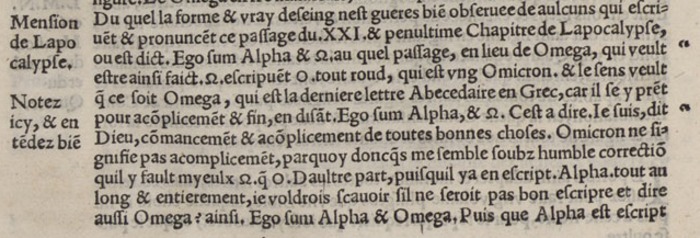
Champ FleuryGeofroy Tory, Champ Fleury (1529), sig. Kiii verso. Here Tory marks God's words both as a quotation and as important to note with his marginal comment, "Note this and listen well" (translated). Image courtesy of Les Bibliothèques Virtuelles Humanistes and les fonds patrimonial des bibliothèques de Blois-Agglopolys.CLOSE or ESC
Figure 8
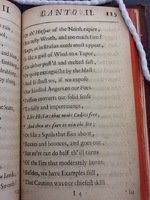
Click For Larger Image

Butler's GhostThomas D'Urfey, Butler's Ghost (1682), sig. I4. Image courtesy of University of Victoria Special Collections.CLOSE or ESC
A much later example of commonplace markers co-existing with quotation marks can be found in Thomas D’Urfey’s Butler’s Ghost (1682). D’Urfey’s poem marks both quotations and commonplace markers with marginal inverted commas (and at times, italics). Figure 8, for instance, shows a speech that is indicated by single marginal inverted commas (quotation marks) with double inverted commas and italics used to emphasize important lines within the speech (commonplace markers). In D’Urfey’s text, like many other early modern works, the punctuation can be indeterminate, particularly in regard to sententious or proverbial speech. While inverted commas could serve to mark quotations or commonplaces, at other times they denoted text that was important even if it was not quoted or sententious (see fig. 9).
Figure 9

Click For Larger Image
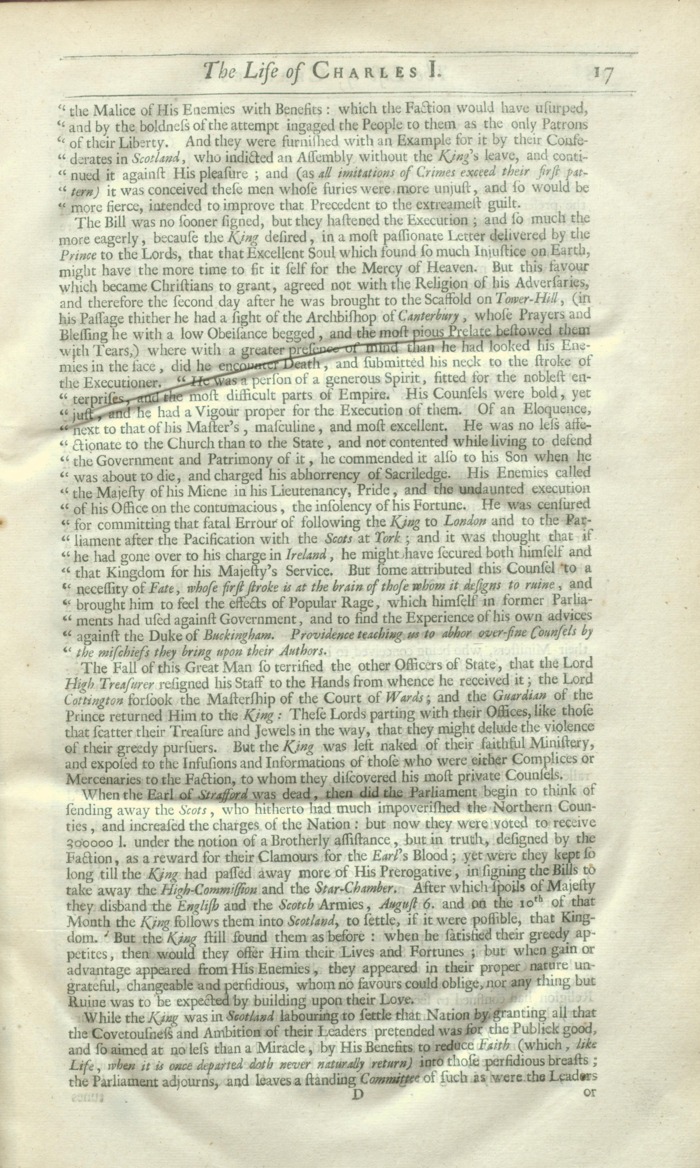
BasilikaCharles I, Basilika (1687), p. 17. Image courtesy of Thomas Fisher Rare Book Library, University of Toronto.CLOSE or ESC
Before the standardization of quotation marks, quotations would be indicated by other means: in the medieval period, scribes might underline a direct quotation, add a marginal note indicating the presence of quotation, or use other punctuation marks altogether.20 In the sixteenth century, brackets were often used to enclose short quotations.21 Direct quotations could appear without any indicators at all in both print and manuscript, leaving readers to rely more on context and signal words such as “quoth he.”22 After the advent of printing, as with commonplaces, a change in typeface could indicate a direct quotation.23 Quotations and commonplaces were both initially represented by a similar array of punctuation: like commonplace markers, the earliest quotation marks are found not within the text but in the margin.
The earliest English grammar book to define the use of quotation marks, the Treatise of Stops, Points, or Pauses (1680) calls them “A note of Citation” and suggests “This note is made, when Authors quoted are / And doth shew forth, what they to us declare.”24 This late-seventeenth-century textbook suggests that quotation marks, like earlier commonplace markers, belong in the margin. Unlike the Treatise of Stops, other grammar books of the time still advocated the use of inverted commas for commonplaces. As Thomas Jones wrote in The British Language and Its Lustre (1688): “This Note call’d twinn’d Commas, is placed in the Margin of a Book; and sometimes in the middle of a Line, or body of a Page: it is a Note of extraordinary passages, and wheresoever you find this Note in your reading, you are to take great notice of the annexed part of the Treatise; for this Note is a significator of a notable passage, or part worthy of great notice.”25 Early style guides disagreed on the meaning of the double inverted commas.
Quotation Marks
Our current practice of using one quotation mark to open a quotation and another to close it developed in fits and starts over the eighteenth and nineteenth centuries. Quotation marks, when they originally appeared in printed books, tended to be typographically represented like commonplace markers: they would appear along the margin of an entire quoted passage, rather than enclose the quoted words. Midline opening quotation marks appeared before their closing counterparts.26 Discrepant practices could appear within one work: for instance, in Edward Young’s 1730 Two Epistles to Mr. Pope, closing quotation marks are used only sporadically, and one instance of reported speech is italicized rather than enclosed in quotation marks (see fig. 10). Furthermore, some texts included opening, closing, and marginal quotation marks to demarcate speech. Individual authors and printers used different methods to indicate speech. The practice of marking every line of a quoted passage continued throughout the eighteenth century but petered out in the opening of the nineteenth century. Around 1700, it was normal for quotation marks to be cast as one piece of type Type metal letters used in a printing press. See: Face Typeface Type-Founder x-height Ascenders Foul Case Galley Typesetter Type Case CLOSE or ESC, which also contributed to the regularization of their use and appearance.27
Figure 10

Click For Larger Image
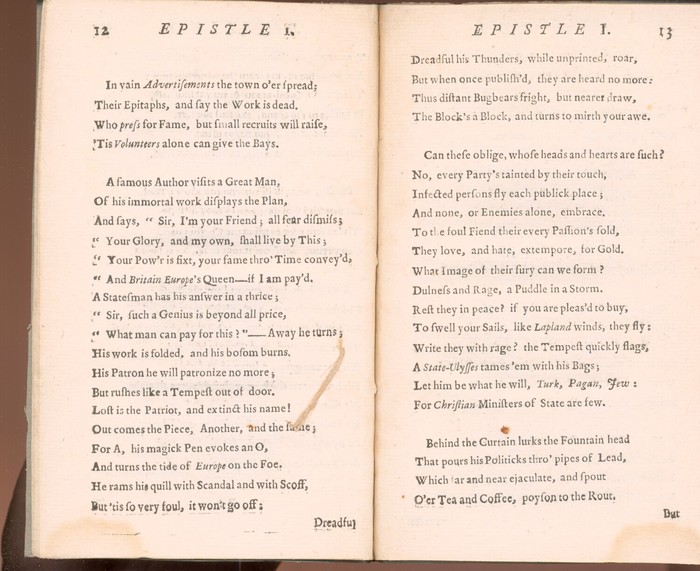
Two Epistles to Mr. PopeEdward Young, Two Epistles to Mr. Pope (1730), pp. 12-13. Image courtesy of University of Victoria Special Collections.CLOSE or ESC
Quotation marks, like commonplace markers, can be found in non-English texts. Though French-language texts now tend to use guillemets Guillemet a glyph created by a single, or two, angle brackets or arrows. Most commonly used in pairs to indicate quotations in many European languages. e.g. He said, « I love you. » See: Glyph CLOSE or ESC or dashes, in the early modern period through the eighteenth century, some French texts used inverted commas.28 Guillemets are used in multiple languages, including Spanish, Latin, and Russian; other languages, such as German, Polish, or Danish, can use inverted guillemets. Some languages, including German and Icelandic, use split-level quotations, that is, a low quotation mark to open and a raised quotation mark to close.29 At times, in French, Italian, Spanish, or Russian, dialogue is represented without guillemets or quotation marks, and instead given by starting each speaker’s words with an em-dash Em-dash a dash or hyphen approximately the width of an "m" See: Glyph En-dash CLOSE or ESC. Some contemporary English writers have adopted em-dash dialogue, which can serve to distance the book from previous work, emphasize dialect, and provide a different aesthetic for the mise-en-page. Two notable examples of English-language dialogue punctuated with em-dashes include Roddy Doyle’s The Commitments (1987) and Irvine Welsh’s Trainspotting (1993).
Beyond Inverted Commas
The familiar double or single inverted commas have been used for other reasons than commonplace markers or quotation marks. In early modern texts, at times, this punctuation could refer to foot or side notes.30 In a usage that has persisted in modern times, inverted commas can mean “ditto” or “see above.” And their shape is sometimes not differentiated from primes or double primes, which are symbols used in mathematics, linguistics, and music notation. Quotation marks can indicate a title or a term—and in computer programming languages, double inverted commas enclose strings. This symbol yokes together an impressive number of uses and meanings, many of which modern readers take for granted. Quotation marks sometimes pop up to emphasize particular words or phrases, though this is not considered proper usage. The “Blog” of “Unnecessary” Quotation Marks documents this ongoing and at times humorous phenomenon.
Even when ostensibly being used as “quotation marks,” this punctuation has moved beyond enclosing quotations and evolved into “quotes.” We have scare quotes and air quotes, irony quotes and emphasis quotes. Air quotes or finger quotes are the physical gesture that people use to express quotation marks in speech, but these can be used not just for showing quotations but also to signal a speaker’s incredulity, scorn, bafflement or other attitudes. Scare quotes and irony quotes can indicate that a word is being used facetiously, or that another meaning is implied.
How we use inverted commas shows our way of perceiving text: commonplace markers suggest that text is transportable and usable; quotation marks suggest the ownership of a text; “quotes” indicate different outlooks. In her famous essay, “Notes on ‘Camp’” (an aesthetic sensibility that embraces kitsch and over-the-top performance), Susan Sontag claims, “Camp sees everything in quotation marks. It’s not a lamp, but a ‘lamp’; not a woman, but a ‘woman.’”31 Marjorie Garber’s Quotation Marks investigates people we consider “in quotation marks,” speaking in quotation marks, and questioning terms we use with distancing or ironic quotation marks.32 Quotation marks evoke questions of authority, who is speaking, what is being said, context, and certainty, which has led to a fascination with this punctuation. Quotation marks run the gamut from quotidian typography to epistemological and affectational shifts.
Not only have quotation marks taken on new ways to represent meaning and moved beyond enclosing quotations, chiastically, some modern and contemporary writers have moved beyond quotation marks by omitting them altogether. In The Road (2006), Cormac McCarthy does not use quotation marks, but instead uses signal words to indicate speech and begins each new speaker on a separate line, building on both the medieval scribal past and the em-dash tradition of representing dialogue. William Faulkner’s use (or lack) of single and double quotation marks, italics, and parentheses challenges readers to determine the purpose and context of particular passages. Though The Chicago Manual of Style and Strunk and White prescribe the correct way to use quotation marks, experimental writers continue to push the bounds of this punctuation.
Digital Commonplace Markers and Quotation Marks
Most word processing software automatically generates “smart quotes” so that curved quotation marks automatically appear in documents. While curved or curly quotation marks (that is, those that curl towards the text as appear in this article) were the norm for centuries of print, typewriter technology led to ambidextrous or straight quotation marks (") so that a keyboard would not need to have two quotation mark buttons. Unicode Unicode a standard for encoding and rendering of text for computers. CLOSE or ESC offers twenty-nine ways to represent quotation marks, from multilingual variants such as the guillemet to visual differences including primes, straight quotes, and curly quotes.
Digital documents rely on their print predecessors, and so quotation marks are still considered the norm for quoting speech. Online, however, quotation marks are often supplemented with hypertextual Hypertext any system which allows the connection and navigation of computer documents through links. CLOSE or ESC links so that a reader can easily click through to the source of a quotation and access it in its original context. These links can highlight an entire quotation, a keyword, or can be found in footnotes Footnote note printed at the bottom of the page. See: Shoulder-Note Endnote Side-Note CLOSE or ESC. Hypertext, then, can make it easier to access the source of a quotation. Other digital conventions, such as Twitter’s re-tweet function, make it possible to quote someone without using quotation marks.
British and American quotation marks are, notoriously, punctuated differently: Americans favour double quotation marks with terminal commas and periods inside the quotation mark. Ben Yagoda suggests that online writing is moving towards “logical punctuation,” which, like British punctuation, puts a terminal period outside the quotation mark as necessary.33
Though commonplace markers fell out of use centuries ago, certain digital tools and conventions mirror commonplace markers by pointing to passages in longer works worth sharing. Adam G. Hooks, for instance, suggests that Amazon Kindle’s highlight functions as a contemporary kind of commonplacing.34 On a Kindle, using the highlight function, readers mark passages they find important, catchy, or worth noting. Kindle’s highlight allows readers to add, in essence, manuscript commonplace markers to their electronic text. Rather than only underlining or highlighting in one physical copy of the text, as one might find in a used book, frequently highlighted passages are by default displayed as a dotted underline in Kindle books, unless the reader chooses to disable the feature. As Hooks notes, many of the highlighted passages are sententious: pithily phrased (if perhaps bland) expressions of wisdom—even today, readers choose to highlight commonplaces. According to Amazon, as of October 2013, the most popular Kindle highlight (chosen by more than seventeen thousand readers) was “Because sometimes things happen to people and they're not equipped to deal with them” from Suzanne Collins’s Catching Fire, the second book in the Hunger Games trilogy.35
Ben Jonson’s Commonplace Markers
Ben Jonson is well-known as a playwright who included commonplace markers in his own plays. By doing so, Jonson fashioned himself as a playwright and authoritative author worth commonplacing, equal to his classical forebears. Every Man Out of His Humour was the first professional play where vernacular commonplaces were signaled typographically.36 Compared to other early modern plays, Sejanus includes an unusual number of commonplace markers. Jonson’s preoccupation with the physical presentation of his plays is well-known; the presence of commonplace markers in his plays is also due to his involvement in the publication of his works.37 Lesser and Stallybrass suggest that commonplace markers that open mid-line are more likely authorial than marginal commonplace markers and point out that Sejanus has the most midline commonplace markers of all early printed plays.38
In Sejanus, Jonson’s use of commonplace markers aligns with his deployment of other textual and typographical strategies that present him as a learned and literary playwright. Sejanus not only begins with an epigram from Martial on the title page, but the margins of the text are also peppered with references to Tacitus, Seneca, Juvenal, and other classical authorities. The opening line of the play alone has two references to classical sources. With the paratextual Paratext material included in a book or other textual form that is not considered part of the "main" text; e.g. title pages, tables of contents, prefatory letters, advertisements, indices, etc. See: Preliminary Leaves CLOSE or ESC material, Jonson aspired to increase his stature as a writer: Sejanus was published with multiple commendatory poems. In his preface, Jonson compares himself to classical writers by explaining that he followed the neoclassical ideals of decorum and verisimilitude but not the unity of time. Famously, Jonson’s preface also distances himself from the unidentified “second Pen” with whom he collaborated on the staged play.39 In Sejanus, Jonson used commonplace markers (along with copious annotations, references to classical sources, and extended paratextual material) to reinforce the status of his work, and, in doing so, perhaps distance himself from any of the play’s treasonous elements.40
Figure 11
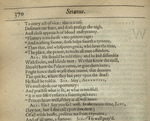
Click For Larger Image
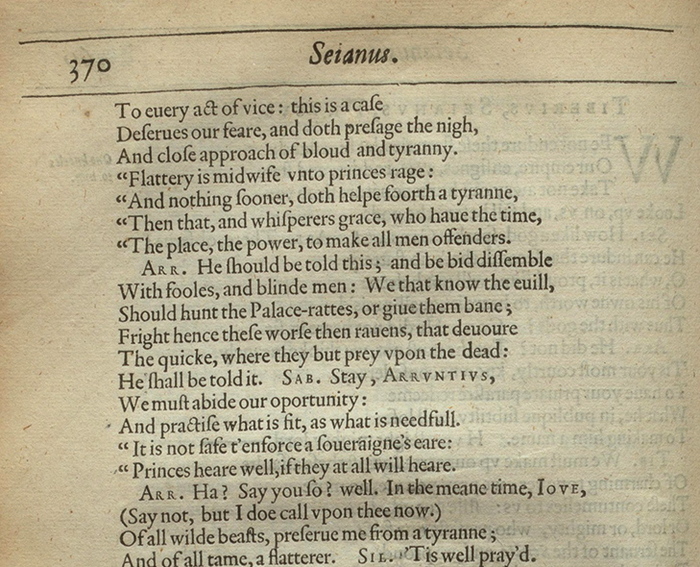
Ben Jonson, Works (1616), p. 370. Image courtesy of Thomas Fisher Rare Book Library, University of Toronto.CLOSE or ESC
The commonplace markers in Sejanus highlight Jonson’s sententious aphorisms as well as his most moving speeches. He used commonplace markers to point out short lines and couplets that can be easily removed from the context of the play. A reader can understand “It is not safe t’enforce a Soueraigne’s eare: / Princes heare well, if they at all will heare” and “Who feares, is worthy of Calamity” without having to know the historical setting of the play, the plot, or even the characters involved (fig. 11).41 Jonson’s commonplace markers signal these pithy and apothegmatic phrases (and even longer speeches) as worth memorizing and copying down.
While we might not be able to ascertain what early modern readers were memorizing, we do have evidence of what they copied into their personal manuscripts, including verse miscellanies and commonplace books. Bodleian MS Rawl. poet. 117, an early seventeenth-century miscellany written in multiple hands, contains multiple sententious extracts from Sejanus, many of which are marked by commonplace markers in the 1605 quarto.42 Barring the circulation of songs from his plays and masques, Sejanus was one of Jonson’s most-excerpted dramatic works: early modern readers followed the cues indicated by the commonplace markers. For Jonson, double inverted commas highlight his wisdom that should be taken and shared, ultimately suggesting that others should quote from his authoritative work—and, indeed, sometimes they did.
Ayres, Philip J. "Jonson, Northampton, and the 'Treason' in Sejanus." Modern Philology 80 (1983): 356-63.
Beal, Peter. "Notions in Garrison: The Seventeenth-Century Commonplace Book." In New Ways of Looking at Old Texts: Papers of the Renaissance English Text Society, 1985-1991, edited by W. Speed Hill, 131-47. Binghamton: Renaissance English Text Society, 1993.
Beal, Peter, et al. Catalogue of English Literary Manuscripts 1450-1700. Arts and Humanities Research Council. https://clio.columbia.edu/catalog/10645717.
De Grazia, Margreta. "Shakespeare in Quotation Marks." In The Appropriation of Shakespeare: Post-Renaissance Reconstructions of the Works and the Myth, edited by Jean I. Marsden, 57-71. New York: St. Martin's, 1991.
Dutton, A. Richard. "The Sources, Text, and Readers of Sejanus: Jonson's 'integrity in the Story.'" Studies in Philology (1978): 181-98.
Garber, Marjorie. Quotation Marks. New York and London: Routledge, 2003.
Hooks, Adam G. "Necessary Quotation Marks." Anchora. June 8, 2011. http://www.adamghooks.net/2011/06/necessary-quotation-marks.html.
Houston, Keith. Shady Characters: The Secret Life of Punctuation, Symbols & Other Typographical Marks. New York: Norton, 2013.
Hunter, G.K. "The Marking of Sententiae in Elizabethan Printed Plays, Poems, and Romances." The Library series 5, 6 (1951): 171-88.
Jones, Thomas. The British Language in Its Lustre: Or a Copious Dictionary of Welsh and English. London: Lawrence Baskervile and John Marsh, 1688.
Jowett, John. "Jonson's Authorization of Type in Sejanus and Other Early Quartos." Studies in Bibliography 44 (1991): 254-65.
King, Edmund G. C. "'Small-Scale Copyrights'?: Quotation Marks in Theory and Practice." Papers of the Bibliographic Society of America 98 (2004): 39-53.
Kisery, Andras. "Politicians in Show": The Circulation of Political Knowledge in Early Seventeenth-Century English Drama. Ph.D. diss. Columbia University, 2008
Lechner, Joan Marie. Renaissance Concepts of the Commonplaces. New York: Pageant, 1962.
Lesser, Zachary, and Peter Stallybrass. "The First Literary Hamlet and the Commonplacing of Professional Plays." Shakespeare Quarterly 59 (2008): 371-420.
Massai, Sonia. "Early Readers." In The Oxford Handbook of Shakespeare, edited by Arthur F. Kinney, 143-64. Oxford: Oxford University Press, 2012.
McKerrow, Ronald B. An Introduction to Bibliography for Literary Students. Oxford: Clarendon, 1928.
McMurtrie, Douglas C. "Concerning Quotation Marks." Gazette of the Grolier Club 8 (1926): 177-81.
Mitchell, C. J. "Quotation Marks, National Compositorial Habits and False Imprints." The Library series 6, 5 (1983): 359-84.
Moore, Colette. Quoting Speech in Early English. Cambridge: Cambridge University Press, 2011.
Moss, Ann. Printed Commonplace-Books and the Structuring of Renaissance Thought. Oxford: Clarendon Press, 1996.
Mylne, Vivienne. "The Punctuation of Dialogue in Eighteenth-Century French and English Fiction." The Library 6th ser. 1 (1979): 43-61.
Parkes, M. B. Pause and Effect: An Introduction to the History of Punctuation in the West. Berkeley & Los Angeles: University of California Press, 1993.
Patterson, Annabel M. Censorship and Interpretation: The Conditions of Writing and Reading in Early Modern England. Madison, WI: University of Wisconsin Press, 1984.
Roberts, Sasha. Reading Shakespeare's Poems in Early Modern England. Basingstoke: Palgrave Macmillan, 2003.
Sherman, William H. Used Books: Marking Readers in Renaissance England. Philadelphia: University of Pennsylvania Press, 2008.
Sontag, Susan. "Notes on 'Camp.'" Partisan Review 31 (1964): 515-30.
Stallybrass, Peter, and Roger Chartier. "Reading and Authorship: The Circulation of Shakespeare 1590-1619." In A Concise Companion to Shakespeare and the Text, edited by Andrew Murphy, 35-56. Oxford: Blackwell, 2007.
A Treatise of Stops, Points, or Pauses. London: n.p., 1680.
Wikander, Matthew H. "'Queasy to be touched': The World of Ben Jonson's Sejanus." Journal of English and Germanic Philology 78 (1979): 345-57.
Yagoda, Ben. "The Rise of 'Logical Punctuation'." Slate. May 12, 2011. http://www.slate.com/articles/life/the_good_word/2011/05/the_rise_of_logical_punctuation.single.html.
